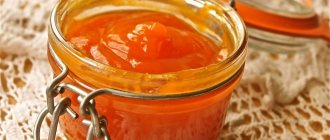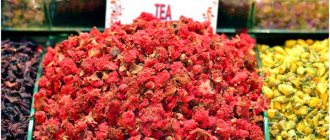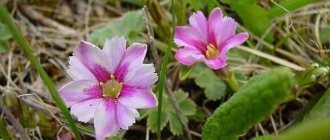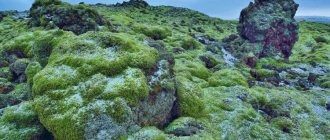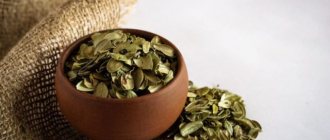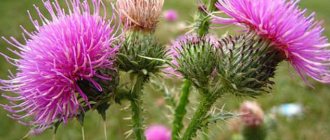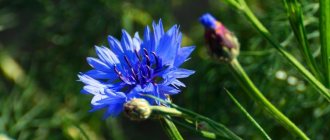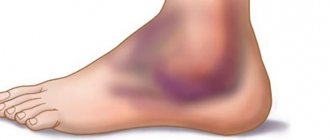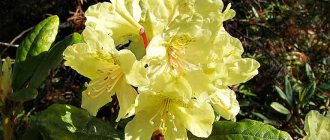Even in Ancient Egypt, female infertility was treated with sage - the phytohormones contained in the plant helped restore hormonal levels. Sage, whose medicinal properties for women have been known for thousands of years, is still actively used in folk medicine today. From our article you will learn what is unique about the chemical composition of the plant, in what form sage can be used and how it affects the condition of women of different ages.
You will also learn why sage can be useful for cystitis, how it solves the problem of acne, and how the plant is connected with pregnancy planning.
Description of the plant
Sage is a herbaceous plant or subshrub, the height of which is no more than 75 cm. It belongs to the genus Sage, to the family Lamiaceae. The plant is native to Italy and southeastern Europe, but it has become naturalized everywhere.
The grass is perennial, its root is woody and powerful, the stem is straight and branched, the inflorescences can be simple or branched. The fruit is a nut, consists of four lobes, dark brown in color, dry.
The medicinal raw materials are leaves or flowering tops. The leaves are dried in dryers, under a canopy, in the attic. Well-dried leaves are moved into bales and stored in a dry room. The first collection of raw materials can be done in September in the year of sowing.
The healing properties of sage for women
The chemical composition of the product is represented by vitamins K, B6, A, E, C, as well as magnesium, zinc, calcium, manganese. It also contains caffeic acid, rosmarinic and chlorogenic acids, and rutin. The herb also contains 160 polyphenols, which behave in the body as antioxidants (molecules that have a beneficial effect on the immune system, neutralizing harmful free radicals).
Experts often cite as an example a study that proved that one cup of sage tea, drunk morning and evening, significantly increases the body's antioxidant defense. Interestingly, the components of the composition are considered to help reduce the likelihood of developing malignant tumors. These components also improve brain function, memory, and intellectual activity.
Sage has also gained great popularity for women regarding its assistance in the field of gynecology. During menopause, the level of estrogen hormones in the female body decreases, this leads to unpleasant symptoms (hot flashes, hyperhidrosis, vaginal dryness, increased irritability, etc.) Sage has an estrogenic effect, which is why doctors recommend it to women experiencing menopause.
Treatment of hormonal infertility is another area of application of the drug.
If a woman has a lack of estrogen in her body, the quality of the endometrium (inner uterine layer) will be insufficient, i.e. the chances of successful implantation of the fertilized egg are low. Consuming medicinal sage in the first half of the cycle raises hormonal levels, which increases the chances of a healthy pregnancy.
You can take sage as a herb in cooking, in the form of decoctions, teas, and infusions. The beneficial oil of sage is also actively used in cosmetology.
Benefit
- It has a pronounced astringent and hemostatic effect , therefore it is used for open wounds and abrasions, internal bleeding. Compresses made from a decoction of the plant can stop bleeding and disinfect the skin around the injury.
- Treats infectious and inflammatory diseases of the respiratory tract : pneumonia, bronchitis, sore throat, tonsillitis, etc. Sage tea cleanses the lungs and bronchi of mucus and phlegm, as it has an expectorant effect.
- Disinfects the oral cavity , eliminates inflammatory processes in the mouth (stomatitis, gingivitis, periodontitis, etc.). Helps reduce bleeding gums and relieve toothache.
- Improves digestion , has a disinfectant and anti-inflammatory effect, increases the secretory function of the stomach. Used to treat ulcers, gastritis, colic, flatulence, spasms.
- Removes excess fluid from the body and improves kidney function . It also promotes slight weight loss due to the removal of water.
Contraindications
If a woman is diagnosed with polycystic disease, endometriosis or fibroids, sage preparations can only aggravate the problem. Therefore, these diagnoses are an absolute contraindication for use.
You should not drink grass if you:
- acute renal inflammation;
- hypothyroidism;
- pregnancy and lactation.
The use of sage will also be harmful to those who have an individual intolerance to the drug. Before using the product, consult your doctor. If you feel worse after use, stop taking it.
Harm and contraindications
Sage decoction - can you drink it in any situation? This question interests many people. Like other medicinal crops, the plant has a number of contraindications. It is not recommended to use sage for longer than 1-3 weeks . Otherwise, there is a risk of negative consequences. After completing the course of therapy, you must interrupt for at least 1 month. Many people are interested in whether it is possible to drink sage and feed the baby breast milk. Experts do not advise doing this, since the plant can provoke a decrease in lactation. You should also not take herbal products during pregnancy. They can cause miscarriage.
The plant should be used with great caution by people who are prone to allergies. Although sage successfully copes with cough, when the intensity of this symptom is high, the use of plants is prohibited.
In addition, restrictions include the following:
- epilepsy;
- exacerbation of renal pathologies;
- deterioration of the thyroid gland;
- hypotension.
Recipes with sage for women's health
If there are no contraindications, begin treatment, remembering to monitor the condition and reaction of the body to the medicinal product.
Climax
Traditional medicine can reduce menopausal syndromes. Sage helps cope with hot flashes and intense heat.
Application options:
- Sage juice. Can only be used if the grass is collected in environmentally safe places. The leaves are squeezed out through several layers of gauze, fresh liquid should be taken 2 tablespoons per day (no more!) For comfortable use, dilute the juice with clean warm water. It is believed that during the first month of use, the intensity of hot flashes is reduced by half.
- Sage oil. Early in the morning, after the dew has dried, collect all the above-ground parts of the sage. Place it in the shade to dry. After this, place the plant in a glass container, fill it to the top with good vegetable oil, and put it in a dark place without temperature fluctuations. Keep the product in this place for 2 weeks, stirring occasionally, then leave and wait another 3-4 weeks. Filter the oil, add 1-2 drops to tea. You can simply lubricate the skin on your wrist with a drop of oil and inhale the oil pores little by little.
You can buy sage oil at a pharmacy or prepare it yourself
- Tea. Pour 3 tablespoons of loose leaf tea, 4 tablespoons of granulated tea, 1 teaspoon of sage raw material into a clean half-liter jar. Add 2/3 of the volume of boiling water. Wrap the container in a towel for 10-15 minutes. Top up. Drink a glass of the drink in the morning and evening, you can sweeten it with honey.
There are also pharmaceutical preparations containing sage, for example, “Menoforce”. Before use, consult a female doctor.
Infertility
Whether sage will be the main or auxiliary remedy for diagnosed infertility, you will find out from your doctor. The problem is serious, so self-medication is excluded. Usually, doctors can recommend sage as a stimulant for successful conception, or more precisely, ovulation, if a woman’s cycle is irregular. It is believed that under the influence of sage, the endometrium grows, the functioning of the ovaries is normalized, the growth and uniformity of follicles is stabilized, and the cycle returns to normal.
Preparing a decoction for conception:
- Brew a teaspoon of raw materials in 200 ml of boiling water.
- Simmer the broth in a water bath for another 10 minutes.
- After the water bath, let the broth cool and leave for half an hour.
- Strain the infusion before use.
- Take the composition 4 times a day before meals, a third of a glass.
Treatment usually begins on the 4th day after the start of menstruation. After two cycles of unsuccessful use, you need to pause. Remember that polycystic disease and endometriosis are contraindications to treatment with sage.
You will learn more about the medicinal properties of sage from the video.
Thrush
An often cited recipe for getting rid of thrush is douching with sage. If you are not sure that you can carry out this procedure correctly, if you are not sure of the correct diagnosis, refuse douching.
If you are convinced that using sage will not harm you, dilute 1 tablespoon of the raw material in half a liter of boiling water. The product is infused for half an hour, after which it needs to be strained.
Douching should be done after consultation with a doctor.
Douching rules:
- the water temperature must correspond to the temperature of the human body;
- release the liquid from the syringe carefully and slowly - strong pressure can cause liquid to be thrown into the uterine cavity, which is very dangerous;
- Before each procedure, sterilize the tip of the syringe;
- do not delay douching; the procedure cannot last more than 15-20 minutes.
The maximum course of daily douching is 10 days. Abuse of such treatment is dangerous by disrupting the natural microflora of the vagina.
Lactation problems
If for good reasons you need to complete lactation, sage can help with this too. Plant hormones in the plant reduce the effect of prolactin, which stops milk production. The easiest way to use a herbal remedy is sage tea.
Sage tea will help stop lactation
Recipe for tea to complete lactation:
- Pour 5 g of dry raw material into a glass of boiling water, cover the cup with a lid and wait for 15 minutes.
- Add honey to the brewed tea for taste.
- Take a third of a glass three times a day.
It is believed that tea with this plant helps cancel lactation within a month. Moreover, breastfeeding “winds down” gradually, without stress for the woman and child.
Cystitis
Sage is a well-known anti-inflammatory and antibacterial agent, which is why women and cystitis are treated with it. 10 g of raw materials should be mixed with 1 glass of boiling water and cook for half an hour over moderate heat. After the product has cooled, you need to strain it and drink 50 g 30 minutes before meals. Treatment lasts 7-14 days. Since sage is contraindicated in acute kidney inflammation, make sure that you are treating cystitis and that such self-medication does not pose a threat.
The benefits and harms of sage for diseases
Helps eliminate various diseases at home, avoid taking synthetic drugs or speed up the action. Features of the influence of grass:
- Sore throat, respiratory tract infections. The plant can act as an antibiotic - kill pathogenic microorganisms and slow down reproduction. Increases immunity, relieves irritation of the throat mucosa, eliminates pain. During infectious pathologies, they gargle with decoctions, herbal oil is used for inhalation, and tea raises the overall tone of the body. If the dosage is observed, sage does not cause harm. Excessive passion for herbal medicine causes allergies, resulting in swelling of the larynx.
- Diabetes. Sage promotes the production of insulin, lowers blood sugar levels, and saturates the weakened body with vitamins and minerals. During therapy, it is recommended to adhere to a moderate dosage - 1 cup per day, since large portions will cause a lack of glucose.
- Gastritis, heartburn. Contains substances that can coat the mucous membrane. It improves the functioning of the intestines and stomach, helps strengthen the sphincter and prevent the reflux of acid into the esophagus. However, at the acute stage of gastritis, the herb is harmful, since the tannins it contains irritate the mucous membrane of the organ and provoke pain.
- Urolithiasis disease. In addition to the anti-inflammatory effect, medicines with sage prevent stagnation of urine and stimulate the cleansing of urates from the kidneys. Infusions and decoctions should be used during stable remission. During an exacerbation, sage should not be taken, since its diuretic effect creates a load on the kidneys and stimulates the painful passage of stones.
- Pancreatitis. The herbal infusion helps relieve irritation from the pancreas during an exacerbation, and tea serves as a preventive measure and prevents the recurrence of the disease. During treatment, take medicinal products for 3 months, then break for 5 weeks. If you drink without a break, an overdose of active compounds occurs.
- Hemorrhoids and other gastrointestinal problems. Prevents the development of constipation, disinfects, stimulates normal functioning of the intestines and stomach. The herb prevents the exacerbation of colitis by reducing irritation of the inflamed walls by digestive acid. For treatment, mix the plant in equal parts with centaury and chamomile and prepare a decoction.
- From worms. The plant contains substances that can have a detrimental effect on parasites. When eliminating worms, it is recommended to drink 1 liter of infusion of a mixture of sage and wormwood, seasoned with honey, per day. However, this remedy should not be given to children under 14 years of age, as it can cause poisoning.
- Infertility. The plant contains a phytohormone that helps a woman get pregnant faster and retain a fertilized egg in the uterus. You can conceive a child after a 3-month course of treatment with decoctions of linden and sage seeds.
- Cancer prevention. The herb reduces the impact of factors that cause cancer: hormonal imbalance, premature cell destruction, lack of nutrients, excess toxins, chronic inflammatory processes. To prevent cancer, use an infusion of mint, St. John's wort and lemon balm, prepared with a decoction of sage. The remedy is drunk for 10 – 14 days. The daily dose is 0.5 liters, divided into 3 doses 20 minutes before meals.
Pharmacological properties of sage, research
Iranian scientists in 2021 published the results of work on collecting data on the properties of medicinal sage. Experts in the field of pharmacology sought confirmation of the effectiveness of using the herb to treat various disorders: gout, ulcers, rheumatism, paralysis, inflammatory processes, glycemic imbalance, tumors.
During the study, information was collected on the chemical composition of the herb, and the results of observations of patients who used extracts, oils, and alcoholic tinctures from sage were processed. Scientists have confirmed the following pharmacological properties of the herb:
- reducing glucose and cholesterol levels in patients with type 2 diabetes;
- normalization of cognitive functions in Alzheimer's disease;
- reduction of sore throat due to pharyngitis;
- improvement of memory, attention;
- positive impact on the psychological state;
- acceleration of healing after tonsil removal;
- prevention of cell mutations;
- elimination of cardiovascular pathologies;
- antioxidant and anti-inflammatory effect;
- reducing the spread of several types of malignant tumors;
- antibacterial, antifungal, antiviral and antimalarial effects;
- acceleration of fat breakdown.
Scientists also noted that clinical trials have shown the possibility of a negative reaction to sage with long-term use or overdose. Side effects included:
- tachycardia;
- vomiting;
- dizziness;
- fetal poisoning if consumed during pregnancy;
- convulsions.
The benefits of sage in cosmetology
In the beauty industry, sage is known as a feminine product with many beneficial properties.
Rejuvenation
Three times a year, provided there are no contraindications, a woman can conduct a course of “sage therapy”. This means that for three weeks in a row she should start her mornings with a cup of sage tea. Pour 1 teaspoon of raw material into 1 glass of boiling water, leave, cool, strain and drink. You can add a spoonful of honey and a slice of lemon to the tea (add lemon only to cooled tea). Such a simple course of three weeks, repeated three times a year, has allowed more than one beauty to maintain youth.
Hair treatment
You can rinse your hair with a decoction of the herb: it will noticeably change in appearance, it will be more radiant, dense, and strong. Per liter of boiled water - 2 tablespoons of raw materials. Infused, strained, cooled and thoroughly rinsed the curls after washing. Repeat in courses of 1-1.5 months. If you cut your hair short to grow healthy curls, make sure to rinse regularly (just alternate between herbal formulations).
Getting rid of acne
Lotion with sage can solve the problem of acne. The recipe is very simple: add 5 drops of propolis oil and 1 tablespoon of aloe juice to a glass of sage decoction (1 tablespoon of raw materials/1 glass of boiling water). Mix well, the lotion is ready for use. Wash cleansed skin with it morning and evening. One glass should be enough for 1, maximum 2 days. Try to make fresh lotion every day.


